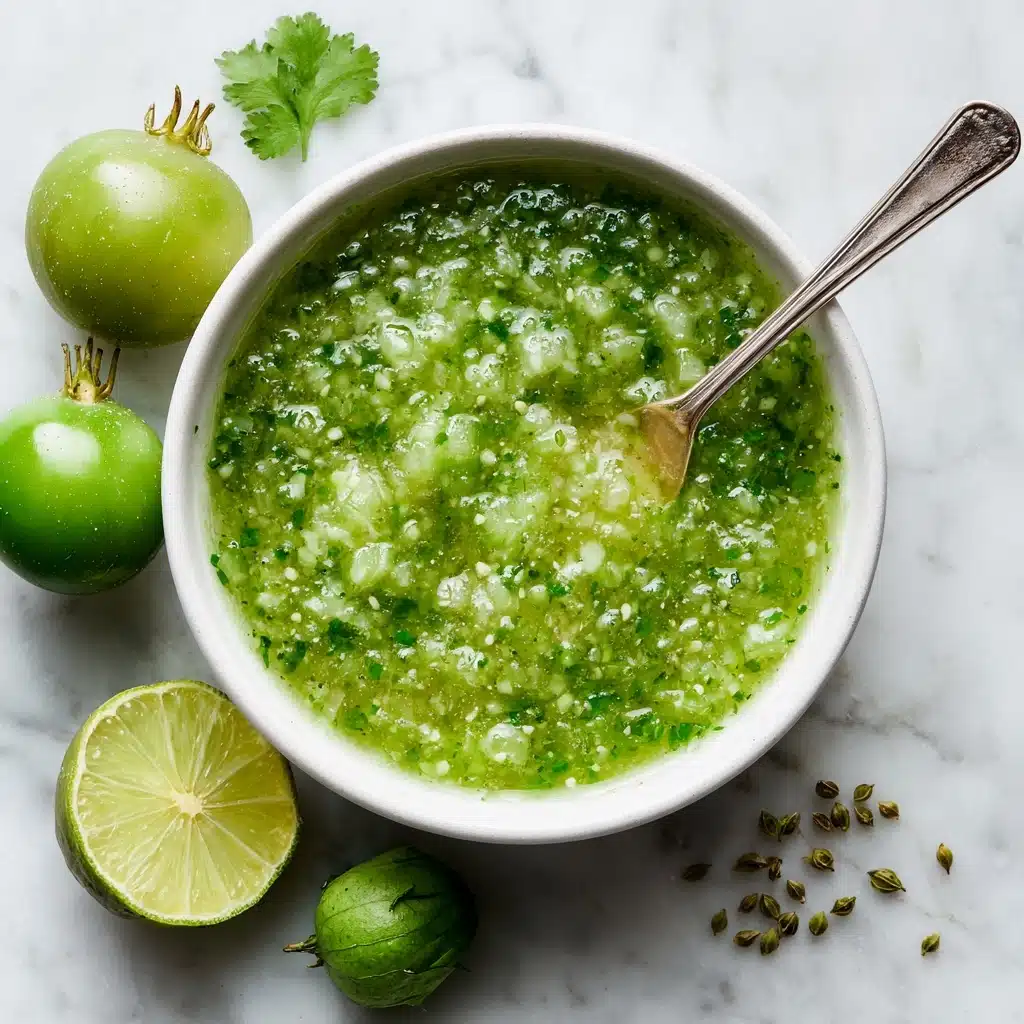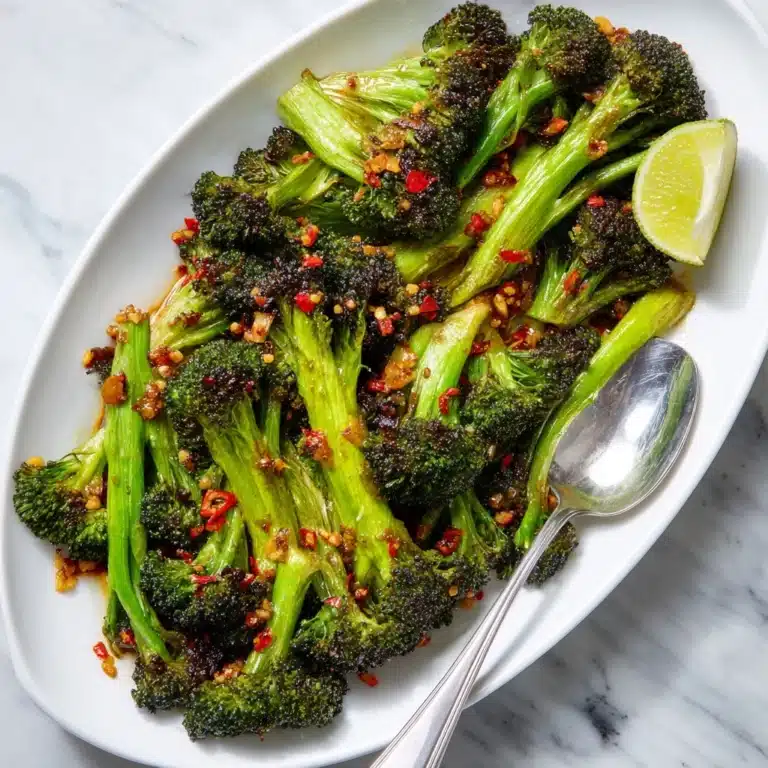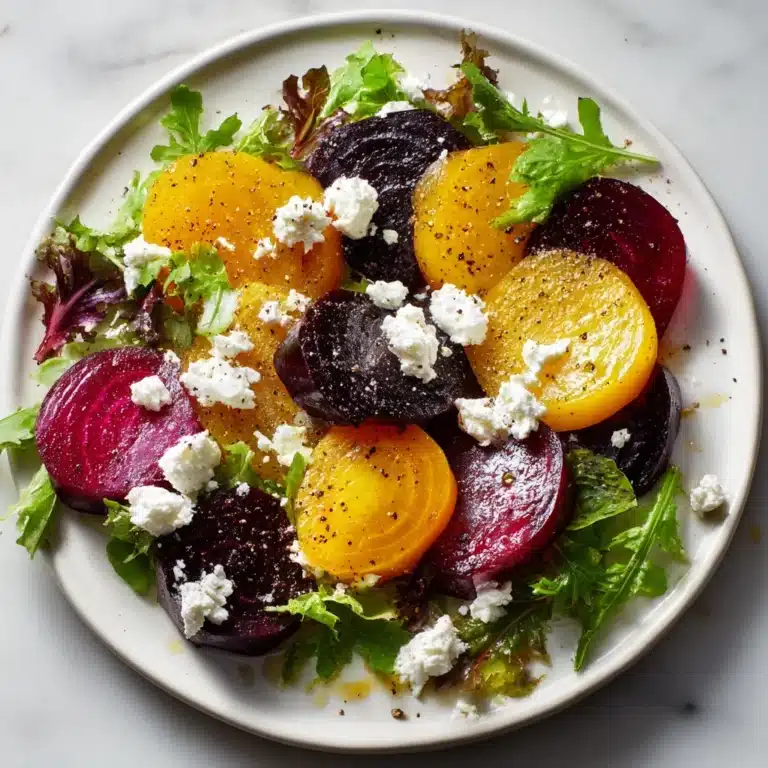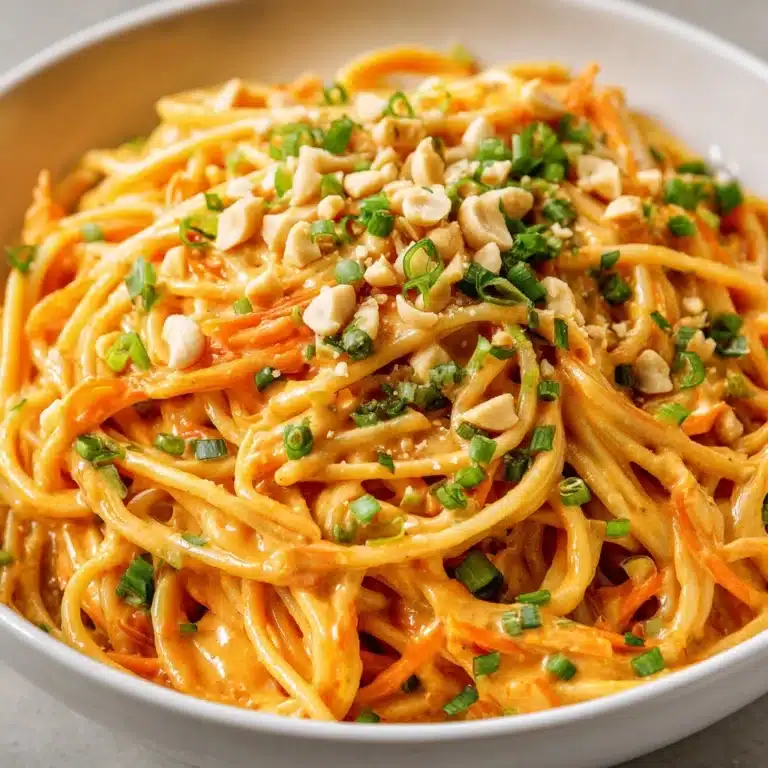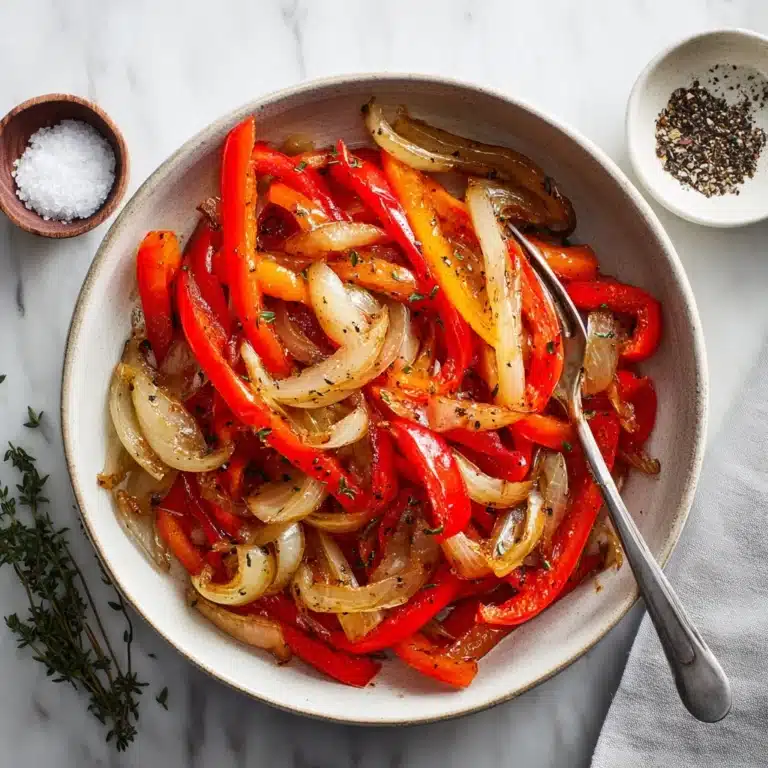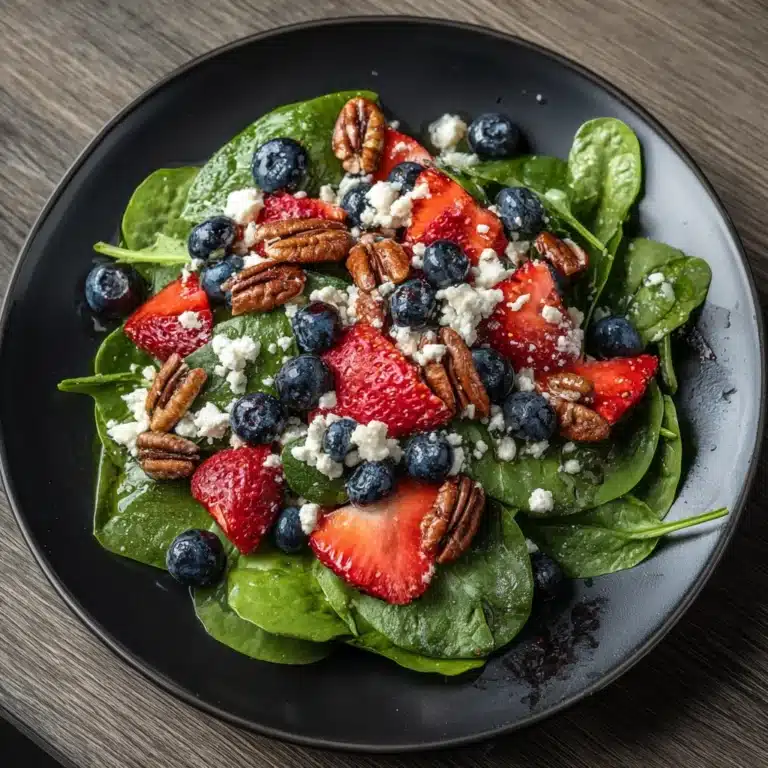If you’re ready to elevate your salsa game, this Fermented Salsa Verde is the vibrant, zesty condiment you never knew your fridge needed. Tangy and bright with just the right amount of heat, it’s a classic Mexican green salsa made better through the magic of natural fermentation. Not only do you get sensational flavor, but you also get a dose of probiotics that’s good for your gut. Whether you’re spooning it over tacos, folding it into scrambled eggs, or serving it alongside grilled meats, this is one salsa that delivers on every level.
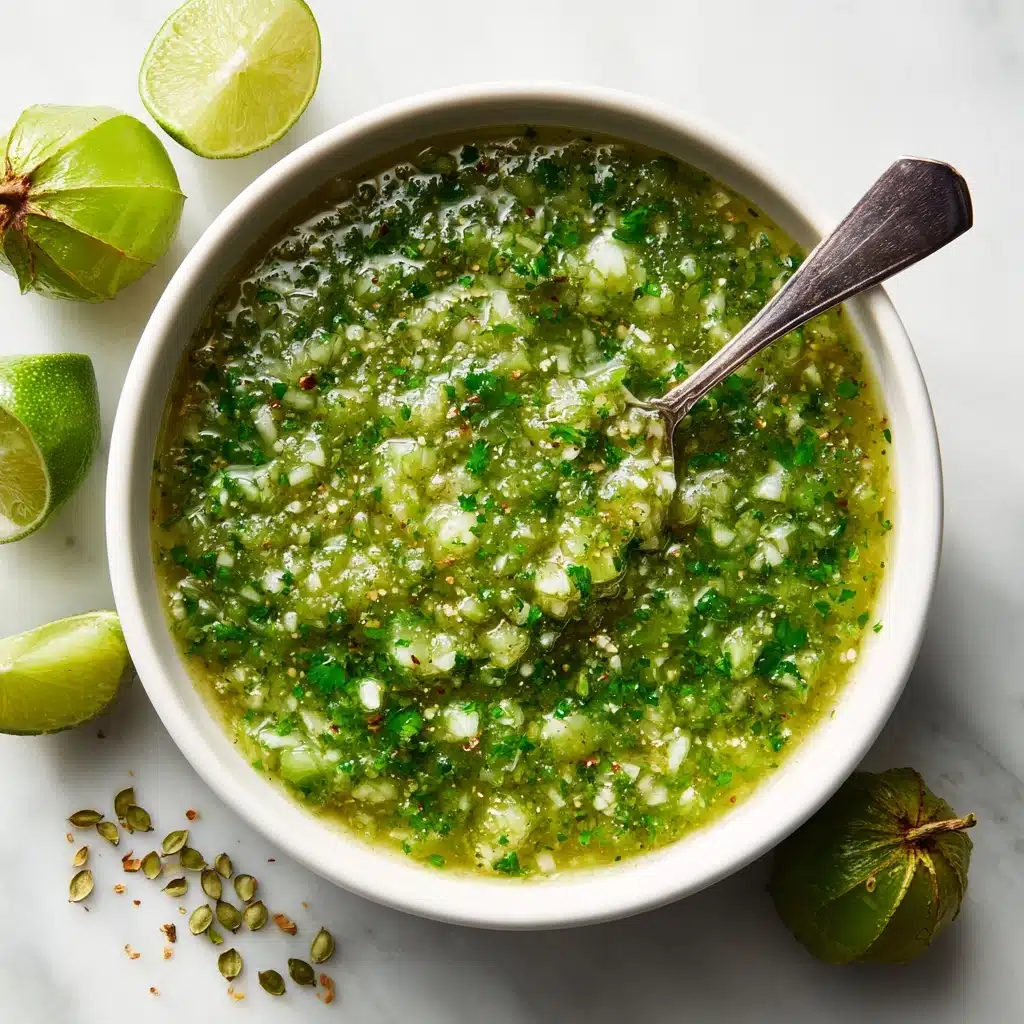
Ingredients You’ll Need
While this recipe keeps things refreshingly simple, each ingredient plays a starring role in making your Fermented Salsa Verde burst with flavor and color. From tart tomatillos to fiery peppers and fragrant cilantro, every component matters—so go for the freshest you can find!
- Tomatillos (1 pound): These bright green beauties are the soul of your Fermented Salsa Verde, providing a tart backbone and that gorgeous color.
- Onion (1 small): Adds a savory, sweet depth and a bit of crunch—yellow, white, or even red will all work in a pinch.
- Garlic (2 cloves): A little kick and aromatic complexity goes a long way; you’ll taste the difference, trust me!
- Jalapeño or Serrano Pepper (1, seeded for less heat): Customize the heat—if you crave spice, leave the seeds; otherwise, seed for a milder kick.
- Fresh Cilantro Leaves (1/2 cup): Brings herbaceous freshness and classic “verde” flavor; stems are fine if they’re tender.
- Sea Salt (1 1/2 teaspoons): Essential for fermentation and flavor; don’t skimp here—your salsa depends on it!
- Filtered Water (2 tablespoons): Ensures a pure brine for happy fermentation; tap water can be unpredictable, so filtered is best.
How to Make Fermented Salsa Verde
Step 1: Chop Your Veggies
Start by roughly chopping the tomatillos, onion, garlic, and jalapeño or serrano pepper. There’s no need to be fussy here about size—your food processor will handle most of the work, but cutting everything into chunks helps everything blend more easily and evenly.
Step 2: Pulse in the Food Processor
Toss your chopped veggies into the food processor along with the fresh cilantro leaves. Pulse a few times until you reach your preferred texture. Some people love their Fermented Salsa Verde chunky for a rustic feel, while others go for smooth and saucy—totally your call!
Step 3: Pack Into a Jar
Transfer the salsa mixture to a squeaky-clean glass jar. Press it down gently with a spoon so there aren’t any air pockets lurking beneath the surface. This ensures even fermentation and vibrant flavor all the way through.
Step 4: Add Salt and Water
Sprinkle the sea salt over your veggies, pour in the filtered water, and give everything a good stir—mix until that salt is well distributed. If the salsa isn’t quite covered with liquid, add a bit more filtered water until the veggies are submerged.
Step 5: Weigh Down and Cover
To keep your salsa submerged and safe from spoilage, press a fermentation weight or a folded cabbage leaf on top of the mixture, then cover the jar loosely with a lid or cloth secured with a rubber band. A little airflow is key to successful Fermented Salsa Verde!
Step 6: Let the Magic Happen
Now, let your salsa ferment at room temperature for 2 to 4 days. Check daily—taste for a lightly tangy, slightly bubbly flavor. Warmer kitchens speed up fermentation, while chilly ones may take a little longer. When it tastes just right, remove the weight and pop a tight lid on for storage.
How to Serve Fermented Salsa Verde
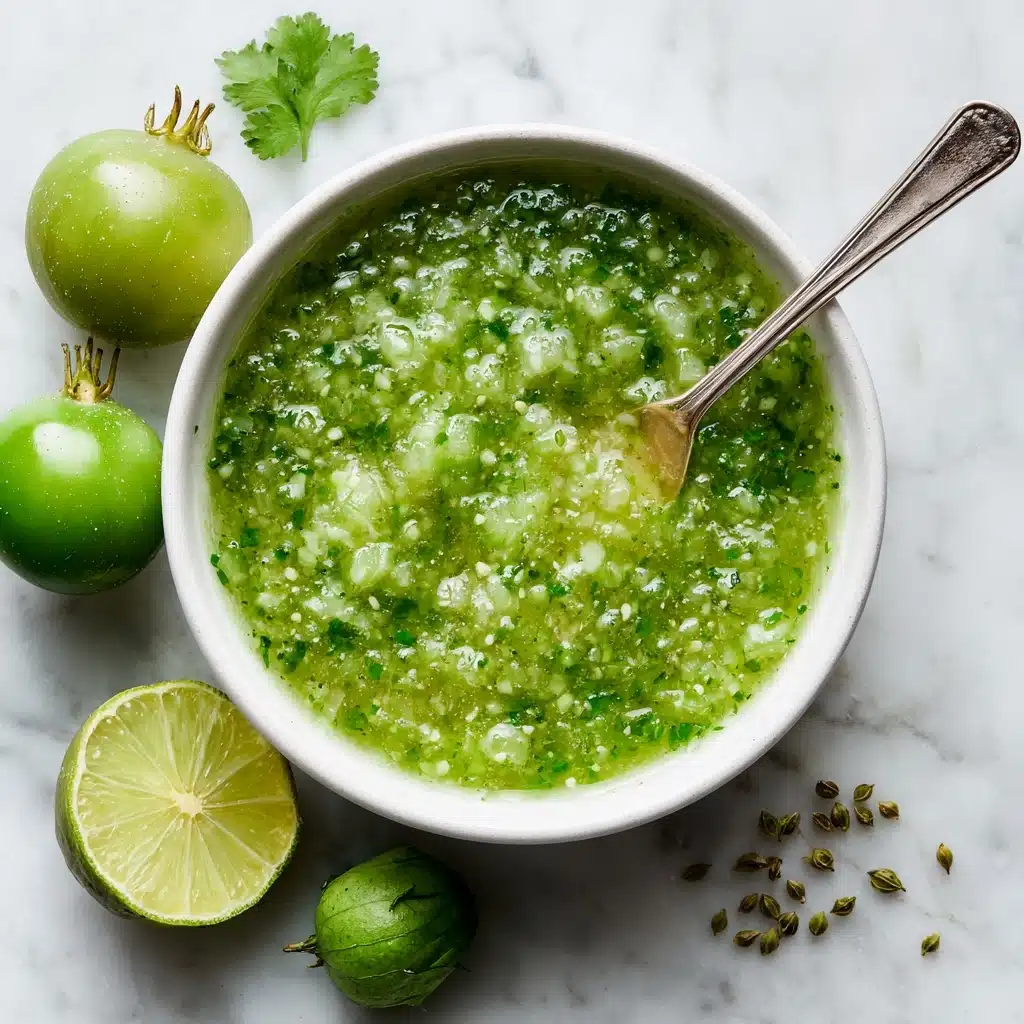
Garnishes
A sprinkle of chopped fresh cilantro or thinly sliced radish on top of your Fermented Salsa Verde makes every spoonful prettier and even more flavorful. Squeeze of fresh lime is optional, but highly recommended for an extra pop of brightness!
Side Dishes
This tangy, probiotic-rich salsa is a knockout next to smoky grilled meats, tortilla chips, or crisped-up potatoes. Try it with breakfast eggs for a morning pick-me-up or as a zesty topping for rice bowls and roasted veggies.
Creative Ways to Present
Serve in a rustic clay bowl with a spoon so each guest can help themselves, or swirl it across a platter of grilled corn or roasted fish for a wow-worthy presentation. Tiny mason jars of Fermented Salsa Verde also make thoughtful, homemade gifts—trust me, friends will beg for your secret!
Make Ahead and Storage
Storing Leftovers
Your Fermented Salsa Verde happily lives in the fridge for up to a month, developing even deeper flavors as time goes on. Store it in a glass jar with a tight-fitting lid and always use a clean spoon to avoid introducing unwanted bacteria.
Freezing
While fermentation purists may prefer their salsa fresh, you can freeze it in small portions if needed. Thaw in the fridge before serving. The texture might soften a bit, but the bold flavors stick around and still give dishes a zingy boost!
Reheating
Fermented Salsa Verde is best enjoyed cold or at room temperature, as heating can dull its lively acidity and probiotic benefits. If you must use it warm—say, for a casserole—add it at the last minute to preserve as much tang and goodness as possible.
FAQs
How do I know when my salsa is done fermenting?
Taste is your best guide! When the Fermented Salsa Verde is tangy, slightly bubbly, and pleasantly sour (but not funky or off-smelling), it’s ready for the fridge. Warmer temps speed up the process, so daily tasting is your friend.
Is it normal to see bubbles or a little fizz?
Yes, bubbles and mild fizziness are hallmarks of successful fermentation—it’s just the naturally occurring bacteria working their magic. As long as you don’t see mold or smell anything unpleasant, you’re on the right track.
Can I adjust the spice level?
Definitely! For a mild Fermented Salsa Verde, seed your pepper or use just half; for extra fire, toss in another jalapeño or serrano. It’s easy to make this salsa as fiery or gentle as you like.
What if I don’t have a fermentation weight?
No problem! A cleaned, folded cabbage leaf can serve as a DIY weight, keeping your salsa from floating above the brine. The main goal is to keep everything submerged for optimal fermentation.
Can I use a blender instead of a food processor?
Absolutely! A blender will give you a smoother texture. Just blend in short bursts and stop to scrape the sides, so you can find your perfect consistency for Fermented Salsa Verde.
Final Thoughts
Making Fermented Salsa Verde at home is a simple pleasure that rewards you with flavor, nutrition, and a sparkling sense of kitchen accomplishment. I can’t wait for you to discover just how zesty, tangy, and utterly fresh this salsa can be. Grab those tomatillos and start fermenting—you’ll be wowed by every bite!
Print
Fermented Salsa Verde Recipe
- Total Time: 15 minutes plus 2–4 days fermentation
- Yield: 1 pint 1x
- Diet: Vegan
Description
Learn how to make a tangy and probiotic Fermented Salsa Verde that adds a zesty kick to your dishes. This easy-to-follow recipe yields a flavorful condiment perfect for tacos, grilled meats, or eggs.
Ingredients
Tomatillo Salsa:
- 1 pound tomatillos (husked and rinsed)
- 1 small onion (chopped)
- 2 cloves garlic (peeled)
- 1 jalapeño or serrano pepper (seeded for less heat)
- 1/2 cup fresh cilantro leaves
- 1 1/2 teaspoons sea salt
- 2 tablespoons filtered water
Instructions
- Roughly chop the ingredients: Chop tomatillos, onion, garlic, and pepper. Add to a food processor with cilantro and pulse to desired texture.
- Transfer to a jar: Put salsa in a glass jar, press down gently. Add salt and water, stirring well.
- Ferment: Cover with weight, let sit at room temperature for 2-4 days, tasting daily.
- Refrigerate: Once tangy, seal and refrigerate.
Notes
- Use fresh, firm tomatillos for best results.
- Adjust heat by adding more or less pepper.
- Pairs well with tacos, grilled meats, or scrambled eggs.
- Fermentation time may vary based on room temperature.
- Prep Time: 15 minutes
- Cook Time: 0 minutes
- Category: Condiment
- Method: Fermentation
- Cuisine: Mexican
Nutrition
- Serving Size: 2 tablespoons
- Calories: 10
- Sugar: 1g
- Sodium: 150mg
- Fat: 0g
- Saturated Fat: 0g
- Unsaturated Fat: 0g
- Trans Fat: 0g
- Carbohydrates: 2g
- Fiber: 0.5g
- Protein: 0g
- Cholesterol: 0mg
